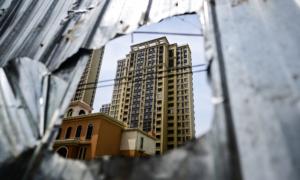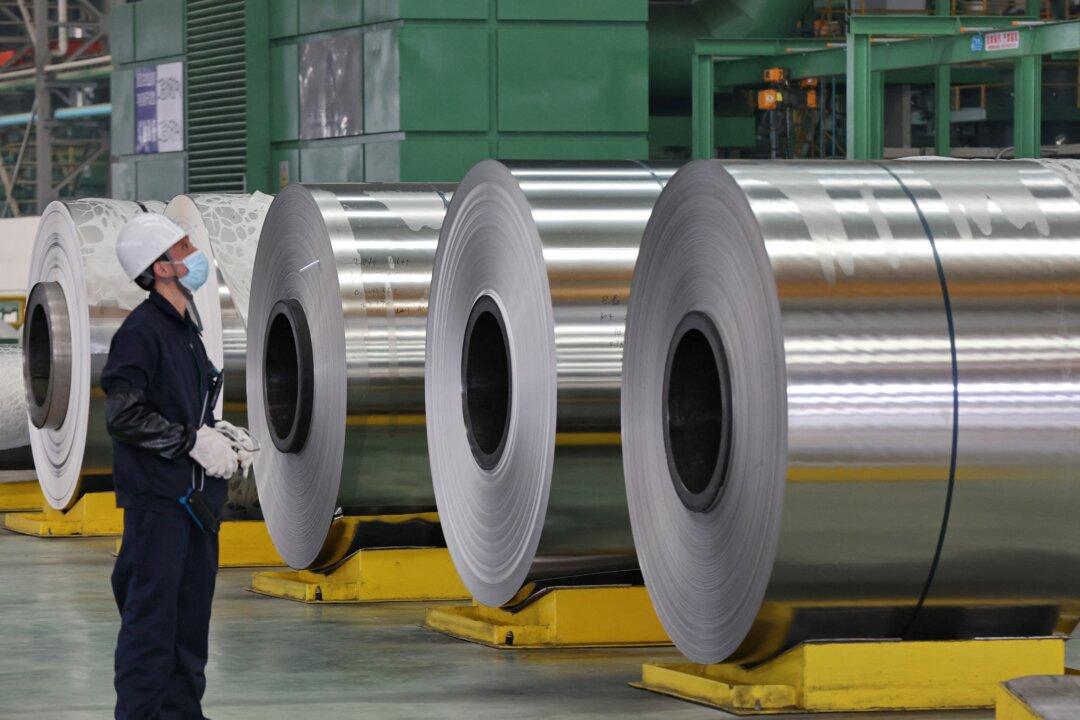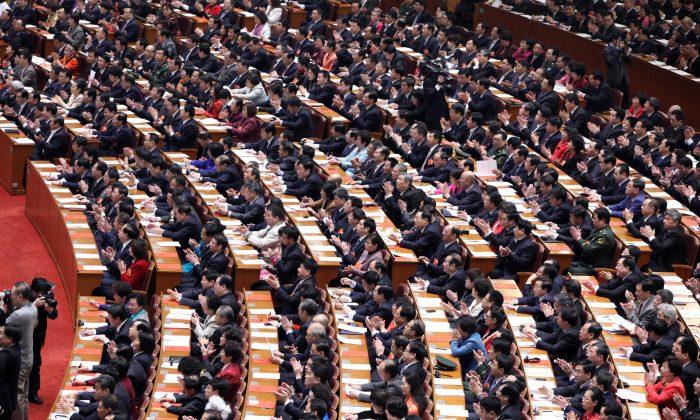Local government debt in China has reached an alarming level, with the Chinese Communist Party (CCP) resorting to frequent issuance of “special bonds” to mitigate the crisis.
According to documents from the China Bond Information Network, Guizhou Province recently issued “special refinancing bonds” on March 18. This marks the sixth issuance of such bonds by the provincial government over the past six months, with total issuance amounting to approximately $39 billion, highlighting the ongoing struggle to manage local debt.
Unlike regular refinancing bonds, where the raised funds are used to repay maturing government bond principal, the funds raised from special refinancing bonds are used to replace local implicit debt.
Since October 2023, local authorities across China have issued special bonds with proceeds collectively amounting to $208 billion thus far.
However, experts warn that this may not suffice to address the magnitude of the issue. This trend is likely to continue with more provinces issuing additional such bonds to cover their debt repayment. Sun Binbin, Chief Analyst of Fixed Income at Tianfeng Securities, suggests that even in an “extremely optimistic” scenario, approximately $389 billion worth of special refinancing bonds could be issued from October 2023 to 2024.
The CCP has a history of resorting to such measures, with two significant peaks in special refinancing bond issuance occurring in recent years. The first wave was between December 2020 and September 2021, with proceeds totaling $87 billion. It was primarily directed toward pilot projects that aimed to resolve implicit debt in established counties. The second surge, from October 2021 to June 2022, with proceeds amounting to $70 billion, was focused on pilot projects without implicit debt in regions like Beijing, Guangdong, and Shanghai.
CCP Issues Special National Bonds
During its recent “Two Sessions” conference, the CCP announced that it plans to issue “ultra-long-term special national bonds” continuously for several years, beginning with one trillion yuan ($139 billion) this year, as stated by Premier Li Qiang in the government work report.According to the work report, the proceeds from these bonds will be exclusively allocated to implementing major national strategies and bolstering security capabilities in key areas, although specific details were not provided.
While bonds with maturities of 10 years or more are typically considered “long-term,” “ultra-long-term” bonds usually span at least 30 years. The CCP previously issued 50-year ultra-long-term national bonds in 2009.
Taiwanese macroeconomist Wu Jialong told The Epoch Times that issuing special long-term national bonds effectively exempts the current government from repayment obligations. He remarked that if the CCP collapses within a decade, the debt would not need repayment, and if it endures for several decades, it would be left for future administrations to address.
“This is not a way of borrowing money with the intention of repaying it. It’s essentially preparing to default right from the start,” he said.
Special national bonds differ from general national bonds as they are issued for specific periods and purposes, typically to address major emergencies. They are not considered in the deficit but are managed within debt balance management frameworks.
Historically, the CCP has issued special national bonds during economic crises, including the 1998 Asian fiscal crisis, the 2007 global fiscal crisis, and the 2020 COVID-19 pandemic.
In October 2023, the CCP’s central finance issued an additional one trillion yuan ($139 billion) in national bonds. Although this money was included in the deficit, it was managed under “special national bond management.” The announcement claimed this allocation was utilized for “local post-disaster recovery and reconstruction” in regions affected by natural calamities like heavy rain, floods, and typhoons.
The recent acceleration in the CCP’s issuance of special national bonds is noteworthy, with intervals between previous issuances spanning nine and thirteen years, whereas the last two issuances occurred within less than half a year, with the latest slated for continuous issuance over “several years.”
Many analysts believe that this surge in special national bond issuance by the CCP is linked to the severe local debt situation. While the central government has emphasized the principle of “whoever made the mess should clean it up,” it cannot entirely absolve itself, as regional risks may escalate into systemic threats.
China’s Debt Crisis Attracts Attention
In recent years, the scale of local government debt in China has continuously expanded. In 2023, local governments issued approximately $1.3 trillion in bonds, reaching a historic high. Of this, new bonds amounted to $647 billion, a decrease of 2 percent compared to the previous year, while refinancing bonds reached $650 billion, representing a 79 percent year-on-year increase.Refinancing bonds, a practice initiated by local governments in China since 2018, has been steadily escalating, skyrocketing from $94.7 billion that year to a 687 percent surge last year.
These so-called new bonds typically fund ongoing major projects, while refinancing bonds are often characterized as “borrowing new to repay old.” The higher the proportion of new borrowing to repay old debts, the greater the strain on debtors, as their ability to access fresh funds directly impacts their cash flow.
Local government finances heavily rely on revenue generated from land sales. However, with the collapse of the Chinese real estate market, revenue from land sales has plummeted sharply, compelling local governments to resort to issuing new bonds to service old debts.
By the close of 2023, the officially disclosed balance of local government debt exceeded $5.5 trillion.
Yet, this only accounts for explicit debt, with the implicit debt balance estimated to be higher. The International Monetary Fund and Wall Street investment banks estimate the total amount of implicit debt yet to be repaid by local governments in China to range from $7 trillion to $11 trillion.
Despite the enormity of the debt burden, precise figures remain elusive, including for the Chinese premier. Frequent instances of debt defaults prompted the Chinese State Council to dispatch working groups in August of last year to audit ten provinces grappling with dire financial situations.
“If the implicit debt is calculated at $9 trillion, then the total debt of local governments in China has reached approximately $14.6 trillion, exceeding 83% of China’s Gross Domestic Product (GDP),” warned Mr. Wu. China’s GDP last year was $17.5 trillion.
Mr. Wu further predicted that the debt-driven economy would lead to a contraction in both consumption and investment, resulting in a deflationary state and prices would fall. This downward spiral would manifest in declining stock and real estate markets, subsequently plunging the entire Chinese economy into a deflationary period due to the collapse of the debt model.
Data from the People’s Bank of China reveal that by the end of 2023, China’s broad money supply had surged to $40.6 trillion, compared to $33.1 trillion at the end of 2021. In other words, in two years, China has issued approximately $7.5 trillion.
Mr. Wu said that while authorities have increased the money supply in hopes of increasing spending and stimulating the economy, in reality, this influx of money has ended up as loans and deposits. People are hoarding money preventively, afraid to spend, and even businesses are reluctant to invest, leading to a liquidity trap. It’s like a black hole absorbing all the money you pour in. The underlying reason is a crisis of confidence.
Mr. Wu predicts that the entire Chinese economy will enter a deflationary state for a very long period, which he estimates will be more severe than Japan’s “lost three decades.”








